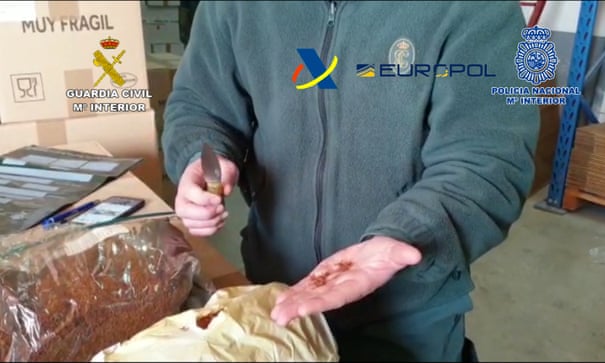Police and customs officers in Spain have arrested 17 people and seized half a tonne of saffron after breaking up a gang that allegedly imported the spice from Iran, bulked it out and sold it as a much-prized Spanish variety.
The arrests came at the end of a two-year investigation that began when officers noticed that companies in and around Ciudad Real, 180km (112 miles) south of Madrid, were importing large quantities of Iranian saffron. Once in Spain, the spice was processed, dyed, packaged and branded as saffron from La Mancha, which has protected designation of origin status.
“The saffron was mostly mixed with flower debris that shouldn’t have been sold as saffron so as to increase the sales volume,” the Policía Nacional and Guardia Civil forces said in a joint statement. “Colourings that are not allowed to be used in food in either the EU or the US were also used to dye the finished product.”
Not only did such trickery prove extremely profitable, the police added, it also “caused huge economic damage to the Spanish saffron industry because it was unable to compete with the prices for which the companies under investigation were selling their products”.
With the help of Europol, the Spanish police examined more than 200 bank accounts across the EU and in the United Arab Emirates. They also discovered that the gang had bought 35 properties in Spain.
Raids on factories, offices and homes in Ciudad Real and Albacete led to the confiscation of six high-end vehicles, a van, jewellery, and half a tonne of saffron stamens and styles.
The two police forces said 17 people had been arrested – and a further 13 were being investigated – on suspicion of crimes including tax fraud, money laundering, smuggling, public health offences and membership of a criminal organisation.
Saffron is the world’s most expensive spice, selling for more than £5,000 a kilo. In Spain, it is used to lend paella its distinctive yellow hue.
The Guardian
More about:
















-1747837442.jpg&h=190&w=280&zc=1&q=100)































